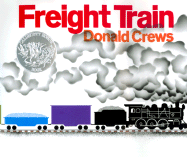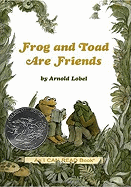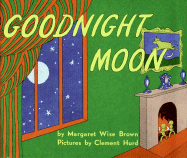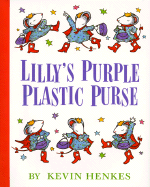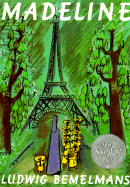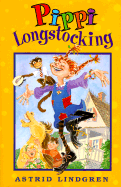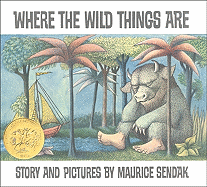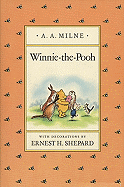Collection Analysis Report
for Favorite Books from Favorite Authors
This report provides data analyses into the titles on this list to help support your efforts to put the right book in each reader's hands.
This report is organized by Collection Analysis by Genre, Cultural, and Curricular Areas, Quantitative Measures, and Qualitative Measures.
Explore all of TeachingBooks
Sign in and enjoy.
Collection Analysis by Genre, Cultural, and Curricular Areas
For the 8 books on this list, please find an analysis revealing the quantity of titles associated with genre, cultural, and curriculum classifications. Additionally, please find the "Not Represented" section where you can click to identify other titles to potentially add to this list.
We hope this collection analysis tool helps you achieve the variety and differentiation of books that you want for your reading opportunities.
(8 of 8 titles have genres, curricular, or cultural experiences.)
- English Language Arts (8 books)
- Picture Book (5 books)
- Humor (3 books)
- Social Studies (3 books)
- Health (2 books)
- Science Fiction / Fantasy (2 books)
- Adventure (1 books)
- Beginning / Early Reader (1 books)
- Fairy Tales / Folklore (1 books)
Genre, Curricular, and Cultural Experience categories are assigned by TeachingBooks based on professional reviews, authoritative sources, and company guidelines.
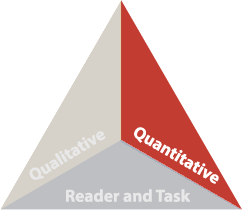 Quantitative Measures
Quantitative Measures
For 7 of 8 titles that have known Lexile levels, below is the low, high, and average Lexile® for the books in this list. We hope these data points, along with the crosswalk to other measures, provide insights into the variety and differentiation of this collection.
Lexile® Average: 634 (Range: 360 - 870)
Reading Level and Grade Band Crosswalk
| Grade Band | Lexile® | ATOS | Degrees of Reading Power® | Flesch-Kincaid | Fountas & Pinnell | Reading Maturity | SourceRater |
|---|---|---|---|---|---|---|---|
| 2-3 | 420-820 | 2.75-5.14 | 42-54 | 1.98-5.34 | I-P | 3.53-613 | 0.05-2.48 |
| 4-5 | 740-1010 | 4.97-7.03 | 52-60 | 4.51-7.72 | O-V | 5.42-7.92 | 0.84-5.75 |
Key: Purple highlight represents average.
Source: National Governors Association for Best Practices and Council of Chief State School Officers.[1]
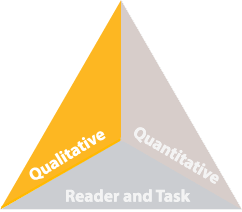 Qualitative Measures (BETA)
Qualitative Measures (BETA)
For 6 of 8 titles that have known qualitative measurements, this graph reveals the aggregated low, high, and average qualitative measures for the books in this list. We hope this range of information shows the variety and differentiation of this collection.
Qualitative Text Complexity Ranges
= low and high range of submitted values = average of submitted values
- Slightly
- Moderately
- Very
- Exceedingly
Qualitative measures for each title are determined by crowd sourced results from professional educators who complete the literary or informational text complexity rubrics. These are relatively new on TeachingBooks so only a small percentage of all the titles have currently been evaluated. Perhaps you can help?
Instructional Materials Summary
Below please find a summary of available multimedia texts and instructional materials that enrich and deepen the discussion of the titles on this list.
- 31 Videos
- 23 Book Readings
- 57 Lesson Plans
- Total of 148 resources
Details for Each Book
Below are the titles on Reading Rockets's "Favorite Books from Favorite Authors". If you wish to see the curricular areas, genres, Lexile® and Qualitative measures, along with the collection of ready-to-use instructional materials, go online to TeachingBooks at: https://school.teachingbooks.net/QLKMTR8
Freight Train
by Donald Crews
- Grades Used: pk, k, 1
- Curricular Areas: English Language Arts
- Lexile: Unknown
- Year Published: 1978
Qualitative Measures:
- Meaning: Slightly Complex
- Text Organization: Slightly Complex
- Use of Visual Features: Moderately Complex
- Conventionality: Slightly Complex
- Vocabulary: Moderately Complex
- Sentence Structure: Slightly Complex
- Life Experiences: Moderately Complex
- Cultural Knowledge: Moderately Complex
Frog and Toad Are Friends
Part of the Frog and Toad Series
- Grades Used: k, 1, 2
- Genres: Beginning / Early Reader, Humor, Picture Book
- Curricular Areas: English Language Arts, Health, Social Studies
- Lexile: 400
- Year Published: 1970
Qualitative Measures:
- Meaning: Moderately Complex
- Text Organization: Moderately Complex
- Use of Visual Features: Moderately Complex
- Conventionality: Slightly Complex
- Vocabulary: Slightly Complex
- Sentence Structure: Slightly Complex
- Life Experiences: Slightly Complex
- Cultural Knowledge: Slightly Complex
Goodnight Moon
by Margaret Wise Brown and Clement Hurd
- Grades Used: pk, k, 1, 2
- Genres: Picture Book
- Curricular Areas: English Language Arts
- Lexile: 360
- Year Published: 1947
Qualitative Measures:
- Meaning: Slightly Complex
- Text Organization: Slightly Complex
- Use of Visual Features: Slightly Complex
- Conventionality: Slightly Complex
- Vocabulary: Slightly Complex
- Sentence Structure: Slightly Complex
- Life Experiences: Slightly Complex
- Cultural Knowledge: Slightly Complex
Lilly's Purple Plastic Purse
by Kevin Henkes
- Genres: Humor, Picture Book
- Curricular Areas: English Language Arts, Social Studies
- Lexile: 600
- Year Published: 1996
Madeline
- Genres: Picture Book
- Curricular Areas: English Language Arts, Health, Social Studies
- Lexile: 680
- Year Published: 1939
Qualitative Measures:
View all instructional resources and text complexity results for MadelinePippi Longstocking
by Astrid Lindgren and Louis S. Glanzman
- Grades Used: 2, 3, 4
- Genres: Adventure, Humor, Science Fiction / Fantasy
- Curricular Areas: English Language Arts
- Lexile: 870
- Year Published: 1945
Qualitative Measures:
- Meaning: Moderately Complex
- Text Organization: Moderately Complex
- Use of Visual Features: Slightly Complex
- Conventionality: Very Complex
- Vocabulary: Very Complex
- Sentence Structure: Moderately Complex
- Life Experiences: Moderately Complex
- Cultural Knowledge: Very Complex
Where the Wild Things Are
- Grades Used: pk, k, 1, 2, 3, 4, 5
- Genres: Picture Book, Science Fiction / Fantasy
- Curricular Areas: English Language Arts
- Lexile: 740
- Year Published: 1963
Qualitative Measures:
- Meaning: Moderately Complex
- Text Organization: Moderately Complex
- Use of Visual Features: Moderately Complex
- Conventionality: Moderately Complex
- Vocabulary: Moderately Complex
- Sentence Structure: Moderately Complex
- Life Experiences: Moderately Complex
- Cultural Knowledge: Slightly Complex
Winnie-the-Pooh
by A.A. Milne and Ernest H. Shepard
- Grades Used: 1
- Genres: Fairy Tales / Folklore
- Curricular Areas: English Language Arts
- Lexile: 790
- Year Published: 1926
Qualitative Measures:
- Meaning: Very Complex
- Text Organization: Exceedingly Complex
- Use of Visual Features: N/A
- Conventionality: Moderately Complex
- Vocabulary: Moderately Complex
- Sentence Structure: Exceedingly Complex
- Life Experiences: Very Complex
- Cultural Knowledge: Very Complex
Explore all of TeachingBooks
Sign in and enjoy.


